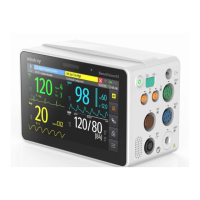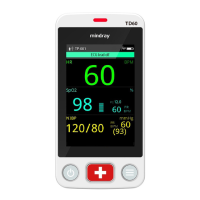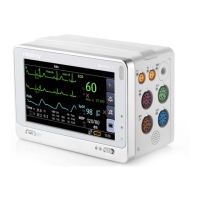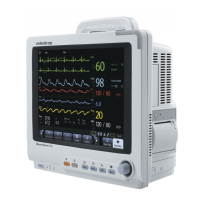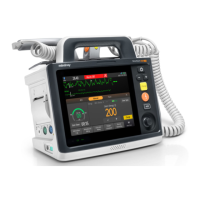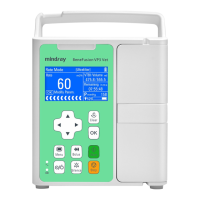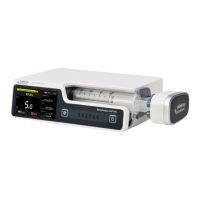17 - 8 BeneVision N Series Patient Monitor Operator’s Manual
• The unit of CVP scale is consistent with CVP parameter unit.
17.7 Measuring PAWP
Pulmonary Artery Wedge Pressure (PAWP) values, used to assess cardiac function, are affected by fluid status,
myocardial contractility, and valve and pulmonary circulation integrity.
Obtain the measurement by introducing a balloon-tipped pulmonary artery flotation catheter into the
pulmonary artery. When the catheter is in one of the smaller pulmonary arteries, the inflated balloon occludes
the artery allowing the monitor to record changes in the intrathoracic pressures that occur throughout the
respiration cycle.
The pulmonary wedge pressure is the left ventricular end diastolic pressure when the airway pressure and valve
function are normal. The most accurate PAWP values are obtained at the end of the respiration cycle when the
intrathoracic pressure is fairly constant and the artifact caused by respiration is minimal.
• PAWP monitoring is not intended for neonatal patients.
17.7.1 PAWP Equipment to Patient Connection
(1) MPM/IBP module (2) Flush bag
(3) IBP transducer (4) Three-way valve
(5) PA distal port (6) Balloon inflation valve
(7) Thermodilution catheter (8) Balloon
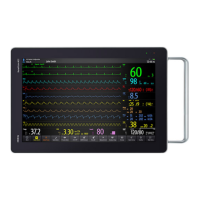
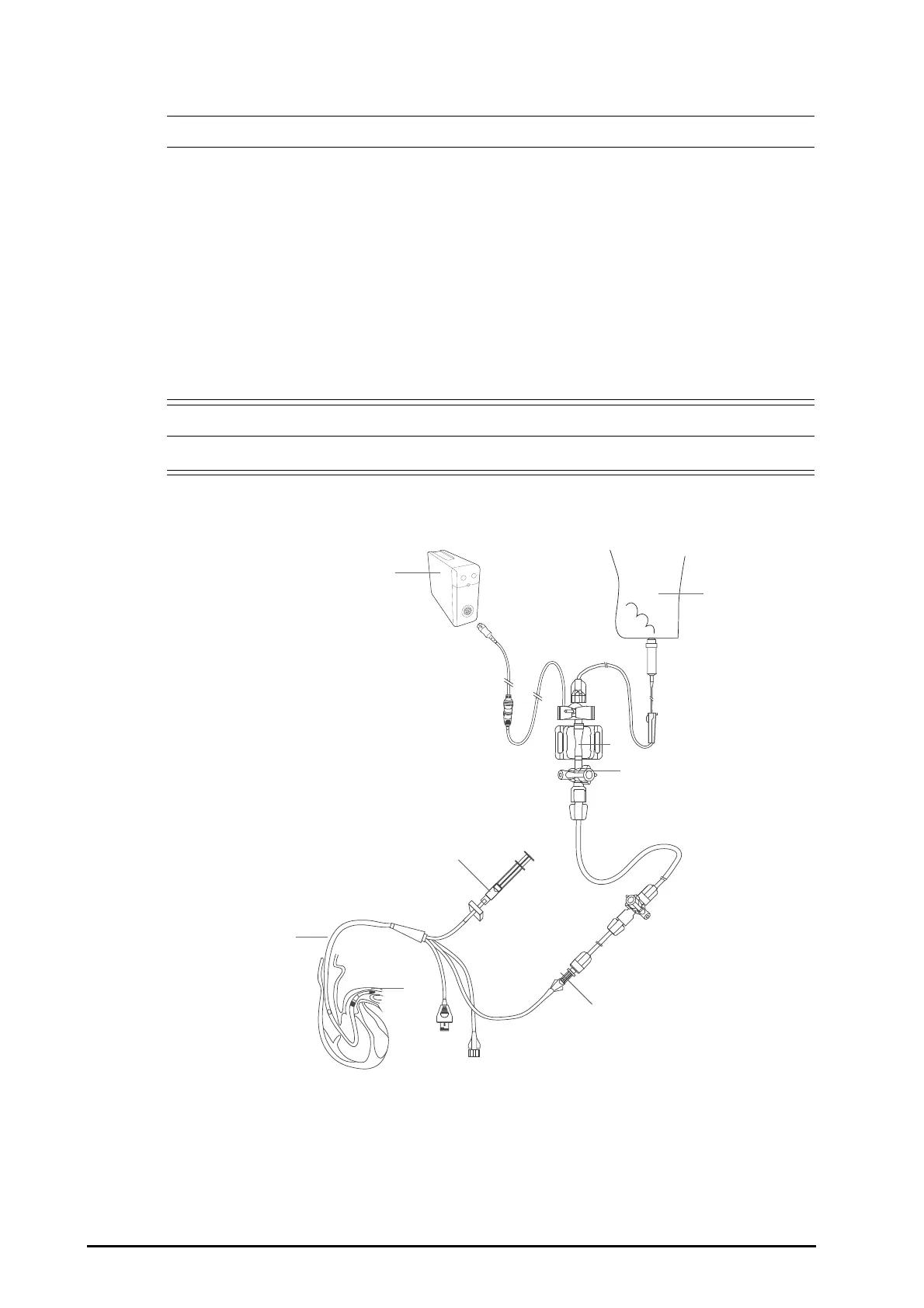